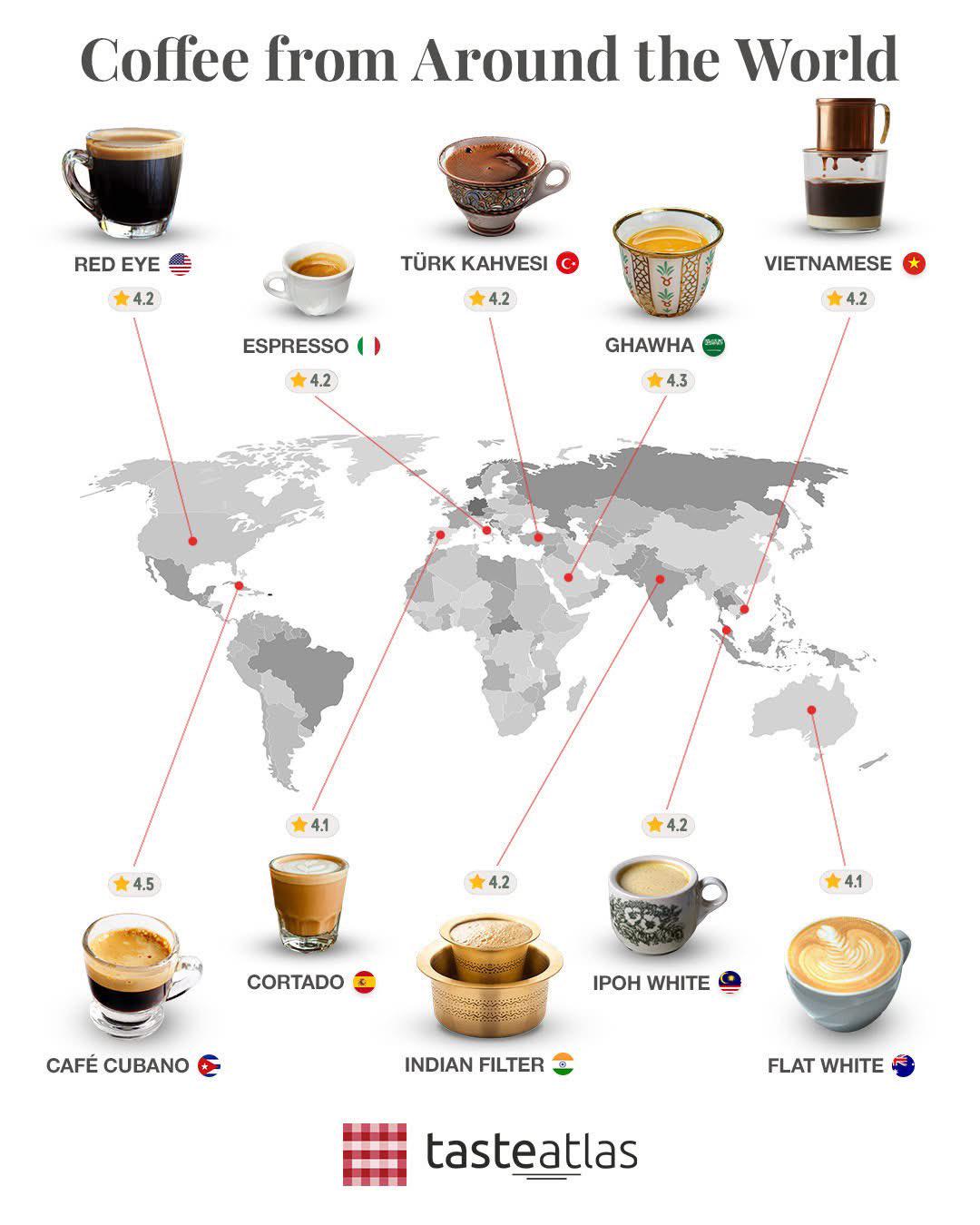Coffee Production Map by Country


David Chen
Data Visualization Specialist
David Chen is an expert in transforming complex geographic datasets into compelling visual narratives. He combines his background in computer science ...
Geographic Analysis
What This Map Shows
The "Coffee Production Map by Country" presents a comprehensive view of global coffee production, highlighting the leading coffee-producing nations and the quantities they contribute to the world market. It visually represents the distribution of coffee farms, illustrating how climate, geography, and economic factors converge to create ideal conditions for coffee cultivation.
Transitioning from the visualization, let's delve deeper into the rich and complex world of coffee production itself, exploring the factors that influence where and how coffee is grown.
Deep Dive into Coffee Production
Coffee is more than just a popular beverage; it’s a global industry that influences the economies and cultures of multiple countries. Originating from the Coffea plant, coffee thrives in tropical climates, and its cultivation predominantly occurs in regions known as the "Coffee Belt," which lies between the Tropics of Cancer and Capricorn. This area encompasses parts of Central and South America, Africa, and Asia, where the conditions—temperature, altitude, and rainfall—are just right for coffee plants.
Interestingly, Brazil stands out as the largest coffee producer globally, accounting for about one-third of the world's coffee supply. Its vast plantations benefit from a combination of favorable climate and extensive farming techniques. Other major producers include Vietnam, Colombia, and Ethiopia, each contributing unique coffee varieties and flavors to the global market. For instance, Colombia’s high-altitude regions produce smooth, mild coffee, while Ethiopia is often credited with the birth of Arabica coffee, known for its complex flavor profile.
What’s fascinating is that coffee production is not just about the quantity but also the quality of the beans. Specialty coffee, which is grown under specific conditions and often follows strict processing standards, has gained immense popularity. This segment of the market has led to a rise in smallholder farms producing high-quality beans, particularly in regions like Guatemala and Costa Rica. In contrast, mass-produced coffee often comes from plantations that prioritize yield over quality, raising questions about sustainability and ethical farming practices.
The world of coffee is also influenced by various economic and environmental factors. Climate change poses a significant threat, as rising temperatures and unpredictable weather patterns can alter growing conditions. According to research, areas suitable for coffee cultivation could decrease substantially by 2050 if current climate trends continue, which would have dire implications for coffee-producing communities.
Regional Analysis
Examining the regional specifics, let’s break down coffee production by some of the key areas highlighted in the map.
- **South America:** Brazil and Colombia dominate this continent. While Brazil focuses on quantity with large-scale production, Colombia emphasizes quality through its well-documented growing and harvesting processes. Interestingly, Colombian coffee is often classified by its region of origin, with each area producing distinctive flavor notes.
- **Africa:** Ethiopia, often referred to as the birthplace of coffee, produces unique varieties that are highly sought after in specialty markets. Countries like Kenya and Uganda are also making their mark with distinct flavors. For instance, Kenyan coffee is known for its bright acidity and fruity notes, whereas Ugandan coffee is often robust with a full body.
- **Asia:** Vietnam has rapidly ascended to become the second-largest coffee producer, primarily cultivating Robusta beans, which are more resilient and have higher caffeine content than Arabica beans. This has positioned Vietnam as a major supplier in the global coffee market, often used in instant coffee products.
Significance and Impact
The importance of coffee production extends beyond mere economics; it impacts social structures, environmental policies, and cultural practices. Coffee farming provides livelihoods for millions of people worldwide, particularly in developing nations where alternative employment opportunities may be limited. However, the industry also faces challenges related to fair trade practices, labor conditions, and environmental sustainability.
With the rising popularity of specialty coffee, consumers are increasingly aware of where their coffee comes from and the conditions under which it is grown. This shift is encouraging more farmers to adopt sustainable practices and focus on quality over quantity. Furthermore, organizations advocating for sustainable coffee production are gaining traction, working towards ensuring that coffee cultivation does not come at the expense of the environment or the farmers' well-being.
In conclusion, coffee is not just a drink; it's a global commodity shaped by geography, climate, and human endeavor. As we navigate the complexities of coffee production, understanding its geographical nuances can help us appreciate every cup we brew. So, next time you enjoy a cup of coffee, take a moment to think about the journey it took from the farm to your table.
Visualization Details
- Published
- October 1, 2025
- Views
- 48
Comments
Loading comments...